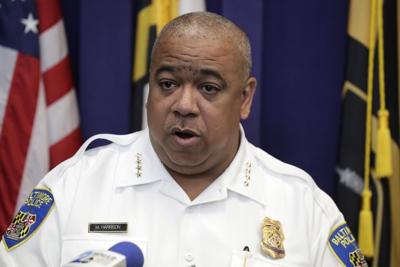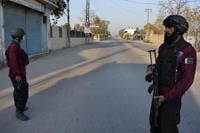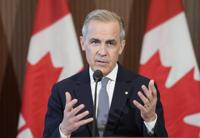BALTIMORE (AP) — Since the Baltimore Police Department started overhauling its practices through a series of court-ordered reforms in 2017, officers have become significantly less likely to use force against members of the public, such as brandishing a service weapon, deploying a stun gun or striking an uncooperative suspect into compliance.
But the agency still needs to improve its ability to hold wayward officers accountable and address a dire staffing shortage, according to testimony Thursday in federal court in Baltimore.
With a mix of praise and admonishment, the discussion focused on recent developments in a yearslong effort to enact sweeping police reform in Baltimore after federal investigators found a pattern of unconstitutional and discriminatory policing practices, especially against Black residents.
The Justice Department launched its investigation not long after Freddie Gray died from spinal injuries sustained in Baltimore police custody in 2015, a case that prompted widespread demands for reform. The investigation resulted in a 2017 that remains in effect, overseen by a federal judge.
At a quarterly review hearing Thursday, U.S. District Judge James Bredar said the police department has made significant progress, now almost six years after the decree was written. That includes improvements in prisoner transport procedures, which came under fire because Gray’s fatal injuries were discovered after officers left him unrestrained inside a police van.
Bredar praised the department’s ongoing efforts to restore public trust, calling it “a flagship agency nationally.” But a and persistent recruitment woes could cause serious setbacks.
Bredar said the staffing crisis among Baltimore police — a common challenge facing law enforcement agencies nationwide in recent years — could likely delay the department’s progress and lead to prolonged court supervision.
“I cannot overstate the issue,” he said. “The department must stop the bleeding.”
In the meantime, Bredar said he hopes to get a clearer picture of whether the department’s policy reforms are translating into measurable improvements on the ground, which won’t necessarily mean reductions in crime. The city recently recorded over for the eighth consecutive year amid a persistent surge in gun violence.
Bredar said more data and analysis are needed to answer overarching questions, but he referenced a few recent reports from the court’s monitoring team, a group of experts tasked with tracking the department’s progress. In an assessment completed last month, the team examined use of force cases before and after the court-ordered reforms.
They found several positive trends: Officers are generally using de-escalation techniques more often, avoiding injuries to themselves and others, and improving interactions with both young people and those experiencing a behavioral health crisis.
The number of documented force incidents fell nearly 55% from 1,525 in 2018 to 691 in 2021, far surpassing a roughly 19% reduction in citizen encounters with Baltimore police during that time, according to the report. The agency is also receiving fewer complaints from citizens about officer conduct.
“The findings in this report move us yet another step closer to rebuilding the trust of the community and strengthening systems of accountability across the department,” agency spokesperson Lindsey Eldridge said in a statement.
However, the report also criticized department leaders for sometimes failing to recognize instances of excessive force and take corrective action. Members of the monitoring team said they reviewed hundreds of cases dating back to 2018 and found numerous examples of officers using force inappropriately — but few of those missteps resulted in discipline against the officers for violating department policies.
The report specifically mentioned the department’s lack of action to curb retaliatory force, when officers punish people for noncompliance. Other examples of improper force the experts cited include officers grabbing people before giving them a chance to comply, engaging in confrontation without backup present and using physical force without trying to de-escalate things first.
In a case that wasn’t included in the report because it happened more recently, a Baltimore police officer ran toward a moving vehicle, then shot the fleeing teenage driver to death last year. That case has raised significant questions about police conduct, but prosecutors against the officers involved. Baltimore police said last week that an internal investigation is ongoing to determine whether any officers will face discipline.
In another assessment focused on the department’s overall compliance with the consent decree, which noted progress in many areas, the monitoring team said systemic change can’t happen overnight — nor should it.
“Police reform, real police reform that rebuilds a department from the ground up, takes a long time,” Bredar said Thursday.
He continued: “The public’s trust will be won only slowly — one positive interaction at a time.”








































